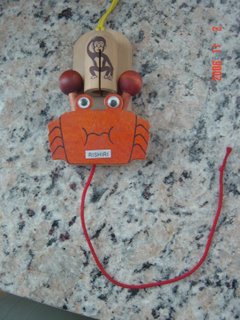
In the past 10 years or so, we start seeing people telling the world that there are in fact two types of taijiquan forms. The "Health Form" is for health purpose and the "Fighting / Application Form" is for fighting applications. According to these guys, the "Health Form" was designed for the general public and aim at promoting good health only. The "Fighting / Application Form" is the "real" art and reserved secretly in the Masters' small circles. It was transmitted secretly through these guys.
Do we really need such kind of form distinction?
As discussed
previously, practising the taijiquan form is good for health for, amongst others, the following reasons:
1. For body and mind coordination: The form was designed to enable movement of the human body in a coordinated and efficient manner. When you move your hands in a taijiquan action, your legs and your spine are usually moving correspondingly in support as well. You mind is trained to move many parts of your body in one go. As the Taiji Classic said: "When you move, the whole body moves; when you stop, the whole body stops."
This aspect trains a practitioner to keep a good control of his body and learn how to maintain his balance (reducing the chance of falling down due to lose of balance on slippery floor). While the muscles power of a practitioner may be declining due to his age, he can maintain his activeness if muscles in different parts of his body can work together in carrying out a task.
2. For recovery from injuries and illness (internal and external): the slow and coordinated movements of taijiquan enhance the self-recovery mechanism within a human body. The slow motion form is a form of "chi" exercise which enhances your intrinsic power. With suitable breathing rhythm, the external movements activate the movements of the internal organs, fostering recovery from diseases caused by mental stress, over drinking, over smoking or lack of exercises.
The usefulness of this aspect has field proven experience. It helps to speed up the recovery processes of patients, in particular from resporatory or gastial diseases.
When I first learned taijiquan, there was no such "health form" and "fighting / application form" distinction. Whether you learned the form for health purpose or for martial art training, the teacher taught you the same form.
The reason is obvious and simple, if you know how to coordinate your body and mind efficiently in your movements, you obtain a balanced body and you will have good health. Practising the form is a way to good health. For martial art training, you also need to develop a balanced body before you are in a position to learn the application techniques, so you practise the form as part of the training (you will need to train in other things to reach the martial art standard). Hence, everyone learned the same taijiquan form from the very beginning.
After a practitioner's body has revived back to the balanced position (in the martial art standard to be exact), the form can be used to fine tune the body and mind coordination. You do the form slowly, in accordance with the martial art requirements, so as to check if each part of the body has been fully activated. However, this is not something a beginner or a practitioner in the intermediate level can appreciate.
The reality is that practising the taijiquan form is only part of the Taiji Martial Art system.
Whilst taijiquan form is an important element in the system, it is foolish to believe that one can acquire some super-natural power by learning the "right" form or that one can become a fighter by practising the form alone. There is no shortcut to success. In order to become a real taiji martial artist, one has to undergo a series of hard training.
There is no secret in this - laziness is the root leading to the popularity of the bad art.
In order to develop a balanced body, you will of course need to prastise the taijiquan form in the correct manner. But this is another story.







